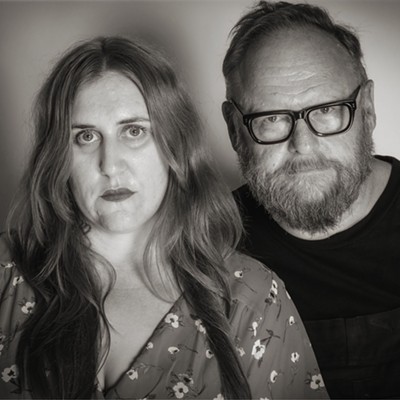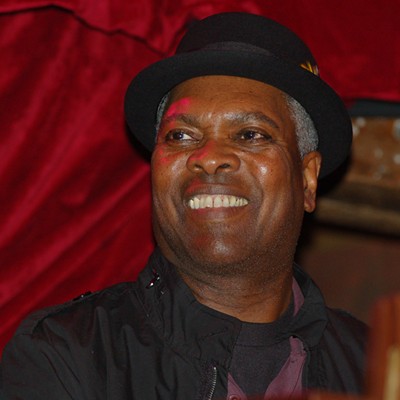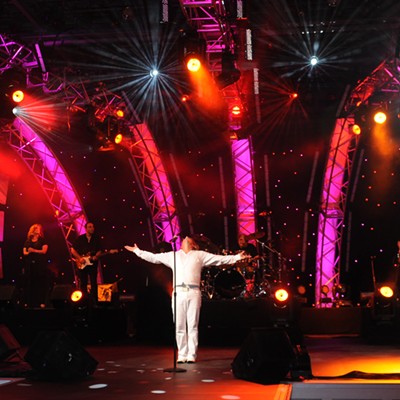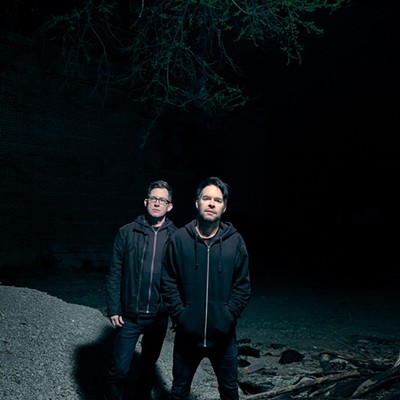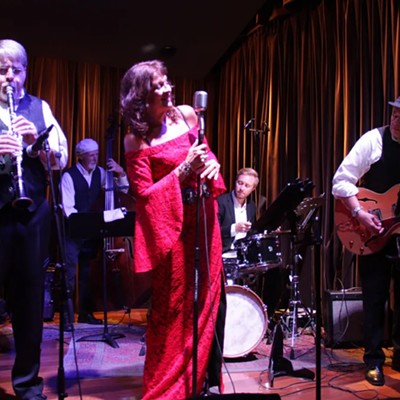Randy Huth (guitar), Joel Winter (bass) and Josh Martin (drums) started playing music together when they were teenagers, and cut their teeth on hardcore punk. Then, in 2001, they had a change of heart.
"We decided to take everything and slow it down drastically, and that was it," said Martin, and hence, Pearls and Brass was born. There are no brass instruments involved in Pearls and Brass' music--the name, explained Martin, "had something to do with glory. It sounds kind of glorious and majestic. I don't know; that's maybe why we like it. It does sound a little fruity, too, I guess."
Rest assured that the music is far from fruity. "Old blues stuff is pretty much what we really listen to, and what, on the foundation, structures the band, as far as music goes. That's what we're all collectively super into," said Martin. Pearls and Brass' inspiration came from listening to old blues music and recognizing the relationship between the emotions and energies emitted from punk, blues and rock, and trying to tap into that energy.
"They are similar, and completely different," said Martin. "They come from the same place: pure passion, hatred, scorn, lost love, the whole thing. I think you can say that for every kind of music, but there's something very authentic about when it comes from one man and his guitar, or someone just plugging in and playing, bashing away at drums and chords--it feels more real."
What Pearls and Brass does is channel things like hatred, scorn and pure passion through their arms and out of their instruments. Their brand-new record, The Indian Tower (Drag City), is their second full-length, and shows Pearls and Brass getting even better at the channeling-emotion thing: the drums, bass, guitar and vocals are glued together.
"The riffs that come, the songs that come, are just coming," said Martin. "Now we're more in tune with each other than ever before, as far as I know what Randy likes and Randy knows what Joel likes, so we can play off of each other much quicker than we could in the beginning. And the goal now is to keep doing that, continuing to get better at it, to become one psychic force.
"There's nothing better than being able to sit down, listen to something that Randy or Joel plays and be able to play with it right away, without thinking too much, just putting my instincts into it, and the same goes for those guys. There's nothing more real than that. It's honest energy that you're exhibiting."
The Indian Tower is oozing honest energy--"Pray for Sound" starts with a riff descended from Hendrix, and slides it all over the floor. And it keeps circling back around--there is a reason this is called stoner rock. If you're not already stoned while listening to The Indian Tower, you will be by the end of the album, just from the hypnotic force of Pearls and Brass' psychic force.
"Probably the song that to me does that the most is--I think it's the 10th track on the CD--called 'Beneath the Earth,'" said Martin. "I feel that most of all that song felt the most in tune with all of us. ... (We) get lost in it when we play it."
The lyrics don't even matter here--the songs are about the way the instruments work off each other. There isn't much differentiation between each song (except "I Learn the Hard Way," which is pure blues, with acoustic guitar), but that only enhances the cerebral experience: If there were too many jarring differences from song to song, it would kill the buzz.
"I think there's nothing better than being able to play a song and put your body on autopilot and allow yourself to visualize certain things in the music, and let your mind wander away," continued Martin. "There's no greater high than that."

